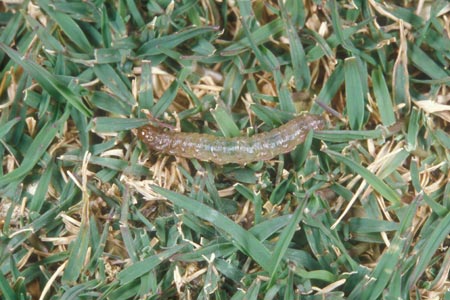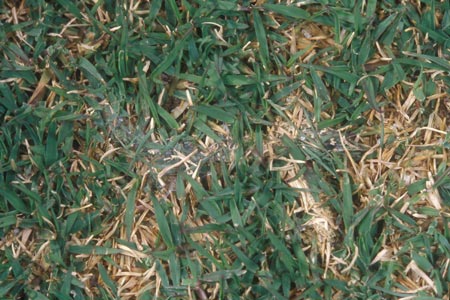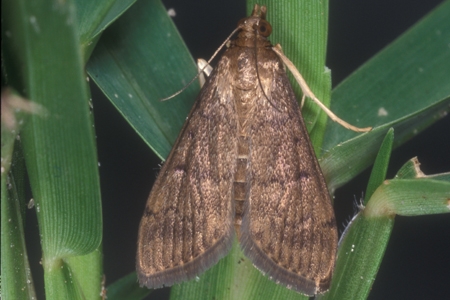Home » Bugs » Lawn Pests »
Active Seasons




Tropical Sod Webworm Appearance and Size Facts
Tropical sod webworms range in size from 3/4 to 1 inch during the caterpillar stage and pose a threat to the lush landscapes of southern Florida. The larvae construct protective silken webs, cocooning underground as they feed on the upper root systems, stems, and blades of grass. The adult moths, erratic and weak fliers, have a short life span and are active exclusively at dusk, resting near the ground during the day.
Distinguishing Tropical Sod Webworms From Other Lawn Pests
What sets tropical sod webworms apart from other lawn pests is their specific feeding behavior and the protective silken webs they construct. To identify these pests, look out for yellow or brown grass patches in sunny areas, as they tend to target these zones, leaving weeds and shady areas unaffected. If these signs are present, seek professional assistance from Hulett Environmental Services for accurate identification and tailored solutions.
We provide pest control for tropical sod webworms in the following locations and their surrounding areas:

Behavior and Habitat of Tropical Sod Webworms
Tropical sod webworms exhibit their distinctive behavior by constructing protective silken webs where they feed and develop. As they pupate in underground cocoons, moths emerge about two weeks later, remain active at dusk, and rest near the ground during the day. Adult sod webworms scatter their eggs randomly into the grass in late afternoon and early evening, initiating a new generation quickly.

Signs of Infestation of Tropical Sod Webworms
Turf damage and yellow or brown patches of grass are the most common indicator of tropical sod webworms. These patches are particularly noticeable in sunny areas, while weeds and shaded lawn sections remain green. If you observe these signs, it’s imperative to address the infestation promptly to prevent further damage.

Tips for Prevention of Tropical Sod Webworms
To prevent tropical sod webworms from infesting your yard, be sure to maintain a proper irrigation and mowing schedule and rake up any thick thatch and destroy it. These methods alone will have limited effects compared to the comprehensive care of professional pest control.
Getting Rid of Tropical Sod Webworms
At Hulett Environmental Services, we pride ourselves on providing effective and environmentally conscious solutions to eradicate tropical sod webworms and protect your lawn. Our expert technicians employ cutting-edge, pet- and family-friendly treatments that specifically target the infestation while minimizing the impact on the surrounding environment.
With over 50 years of experience in pest control, we understand the unique challenges posed by tropical sod webworms and tailor our solutions to help ensure the long-term health and vibrancy of your lawn. Trust Hulett for a pest-free and eco-friendly approach to improving your outdoor spaces.
Effective Tropical Sod Webworm Control Solutions
For comprehensive control and elimination of tropical sod webworms, you can count on Hulett Environmental Services. Our experienced team provides tailored solutions to address infestations and protect your lawn. Contact us for a professional inspection and customized pest control measures so you can enjoy your landscape!




